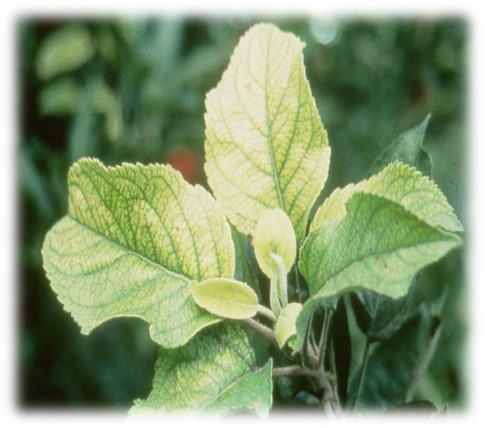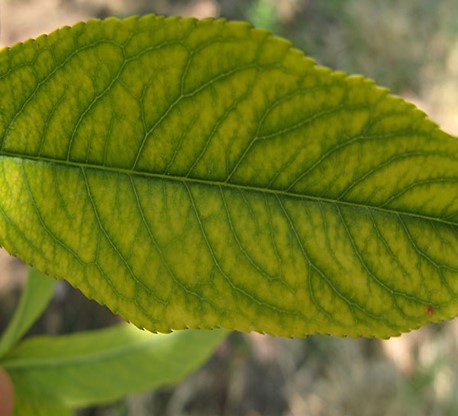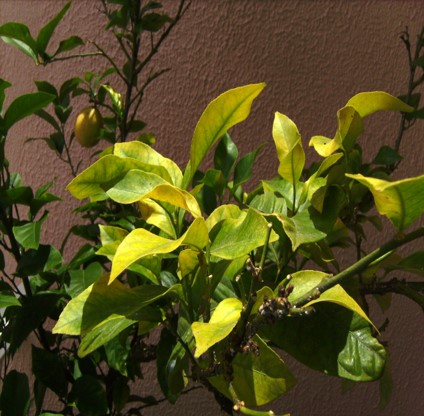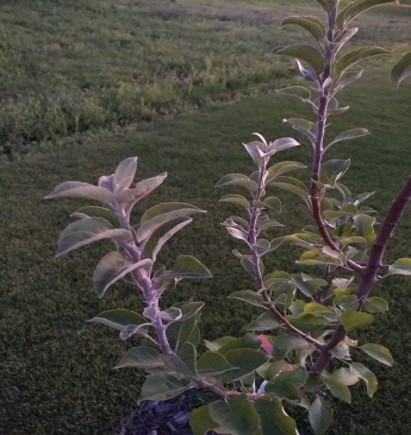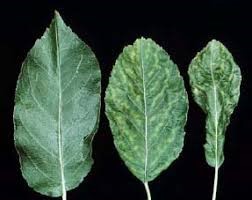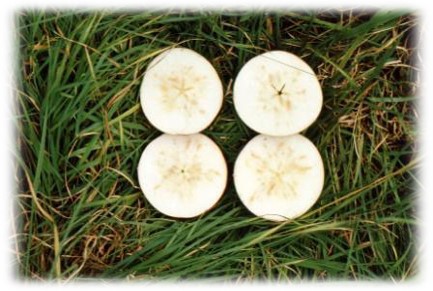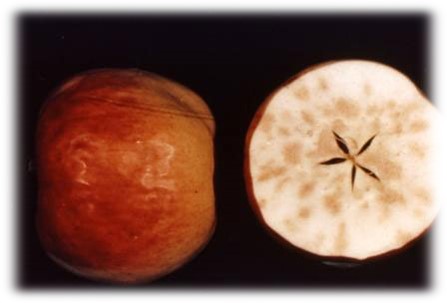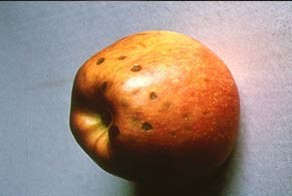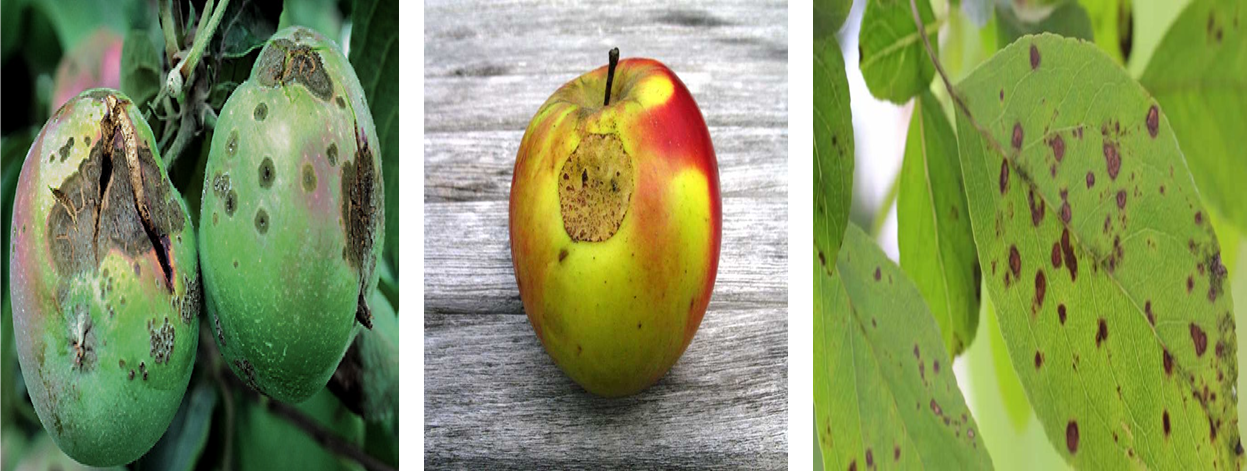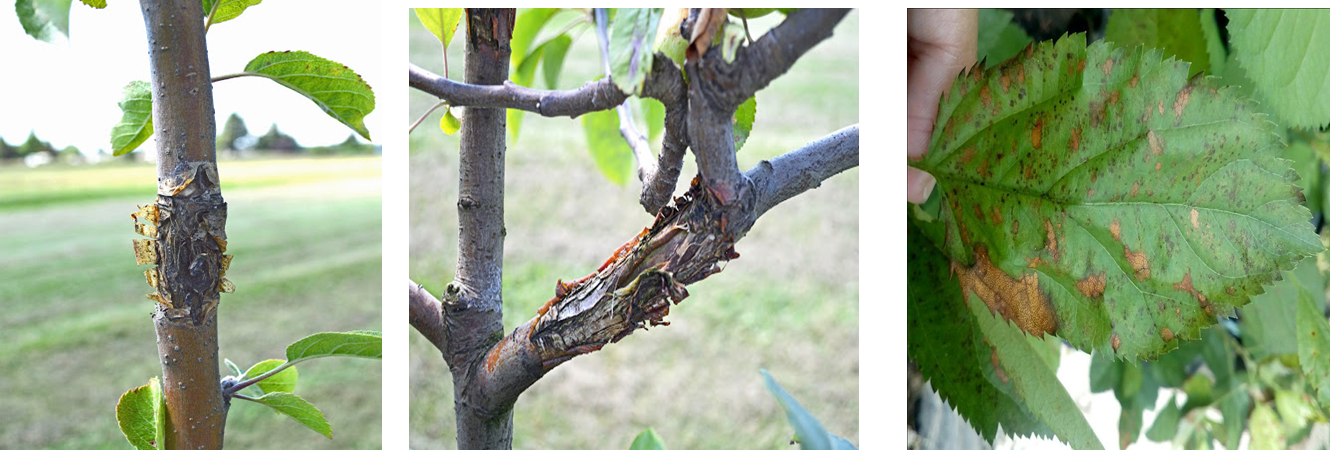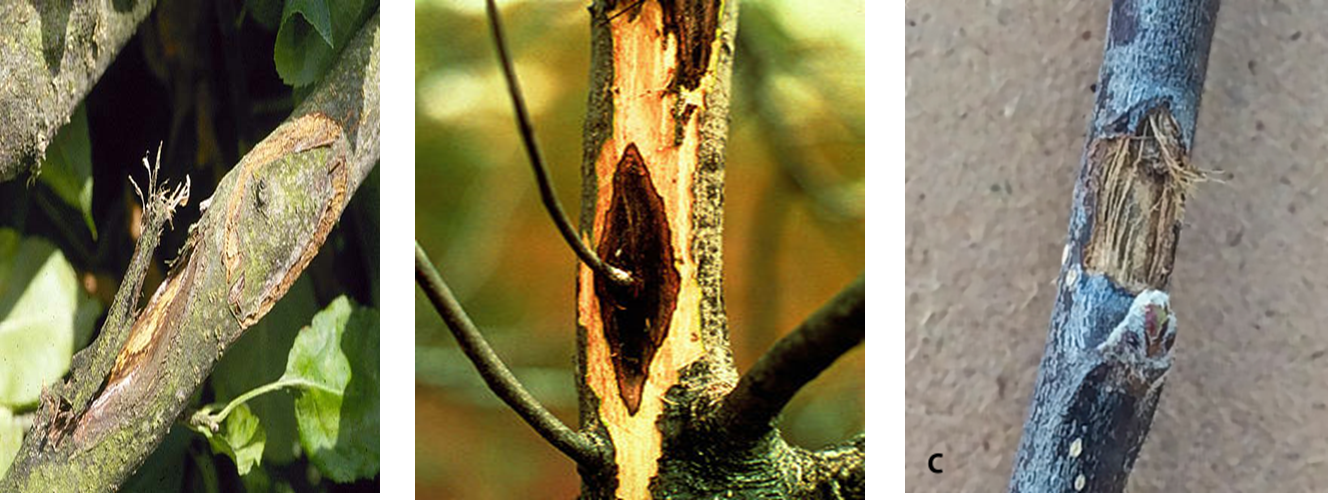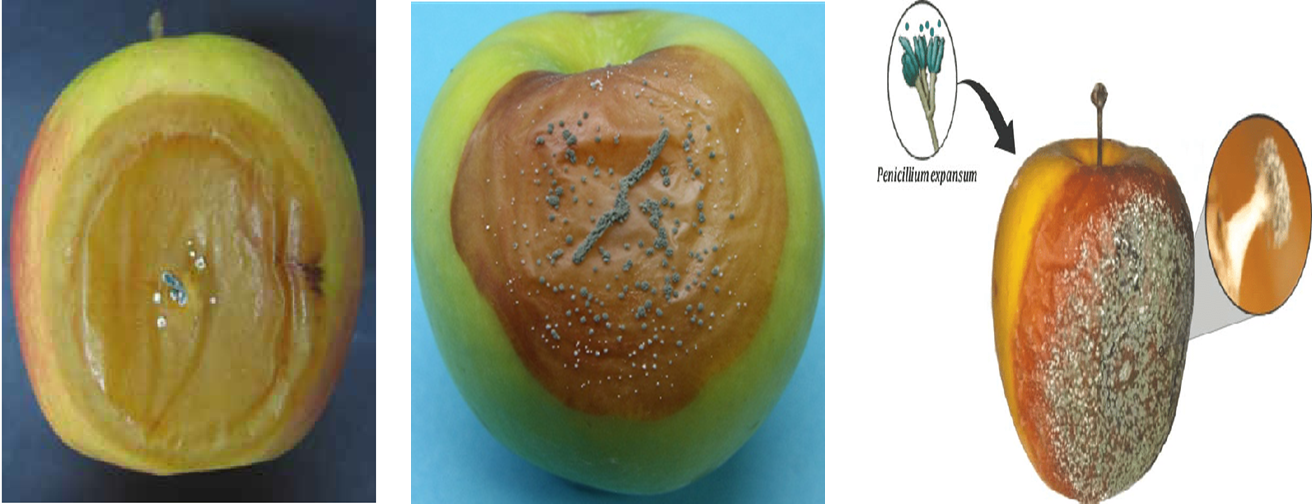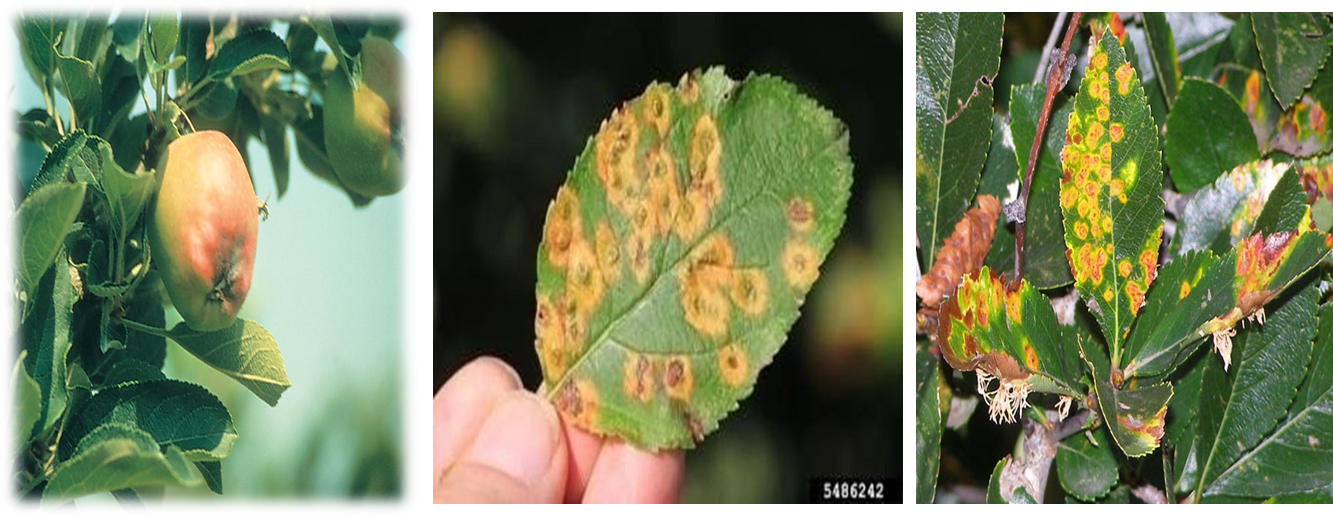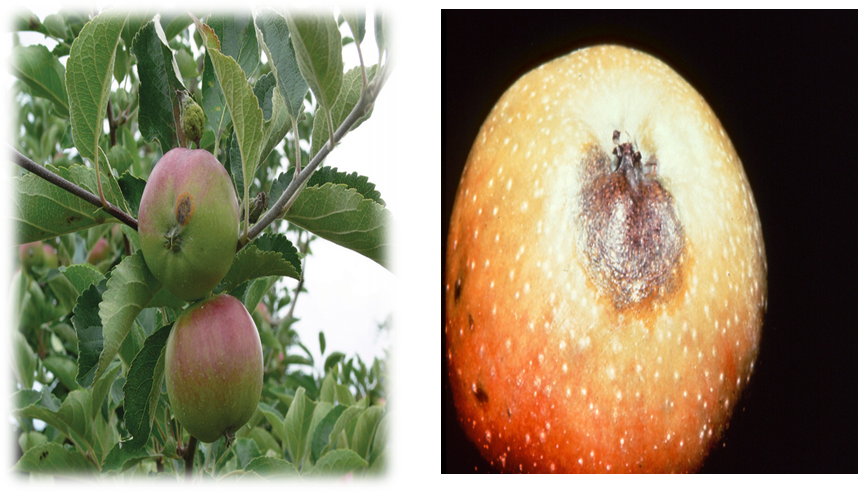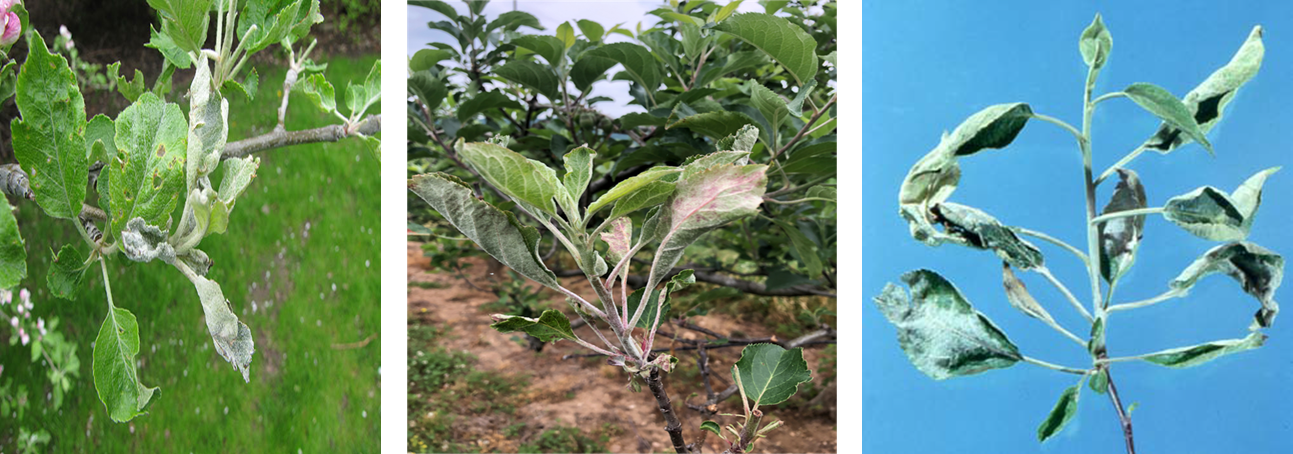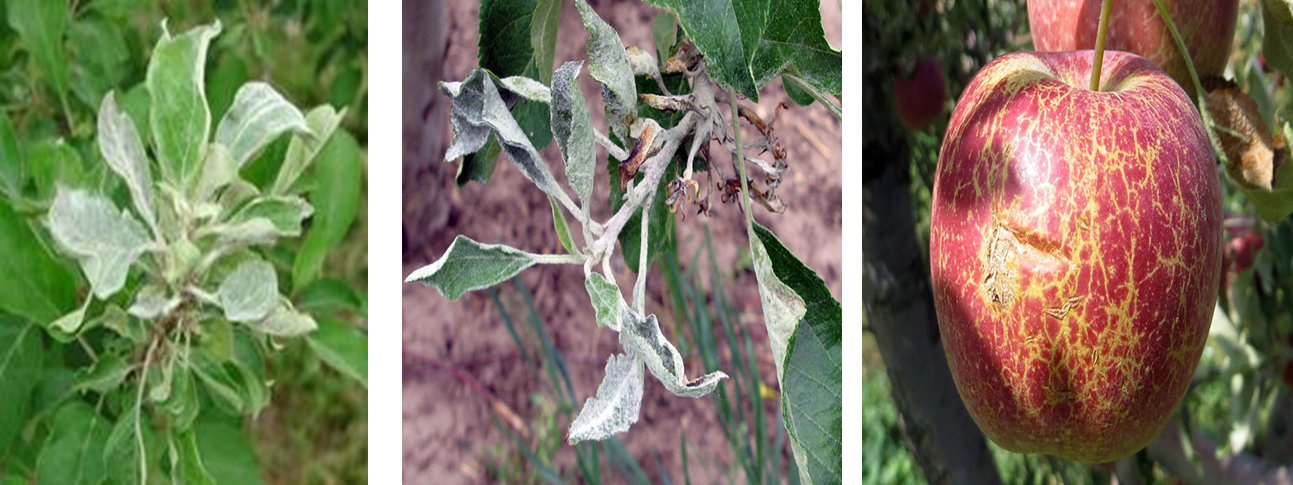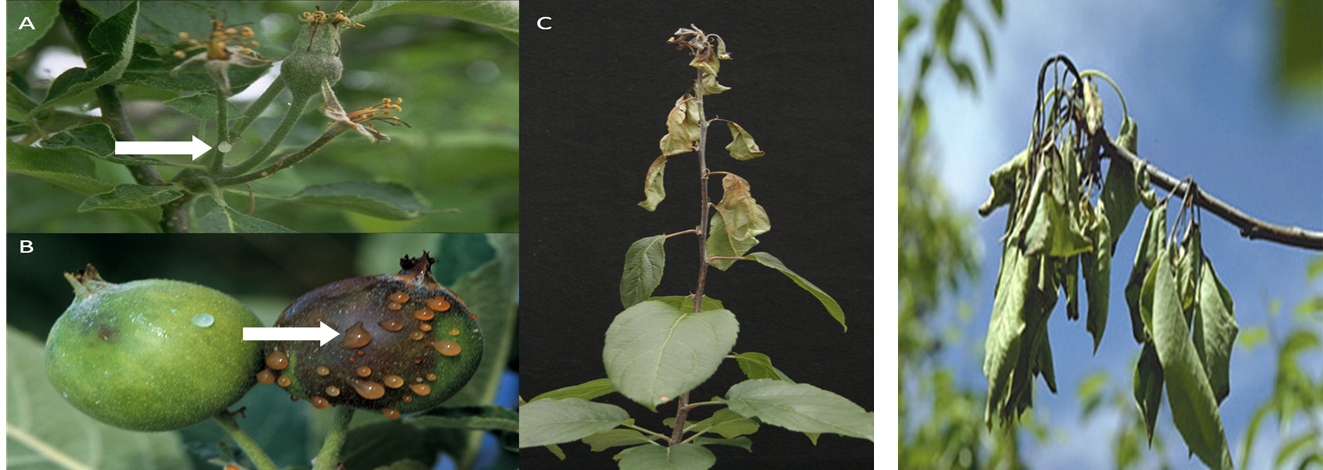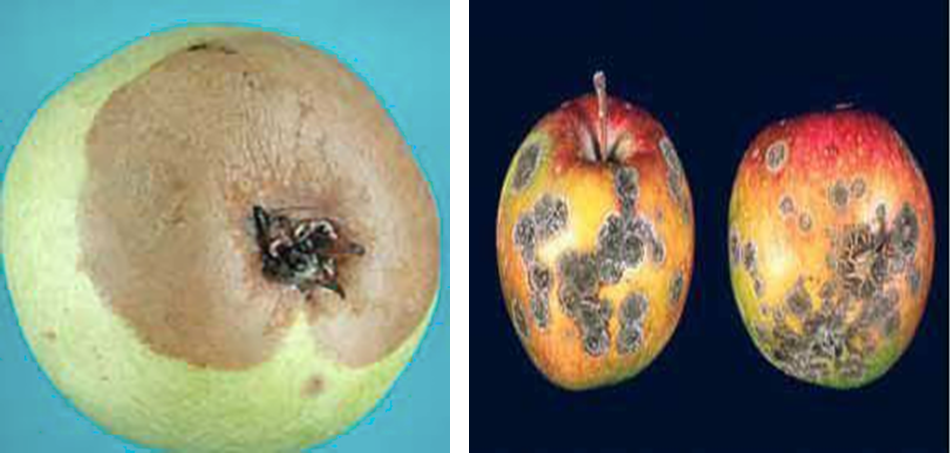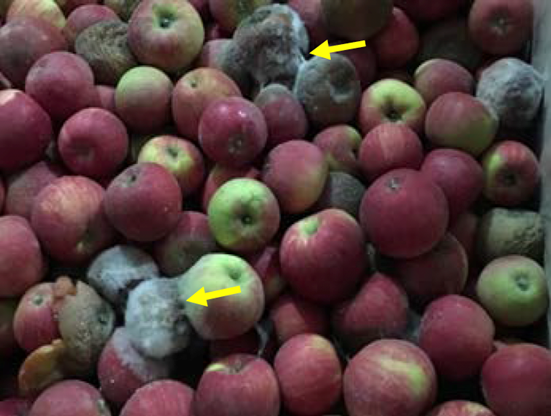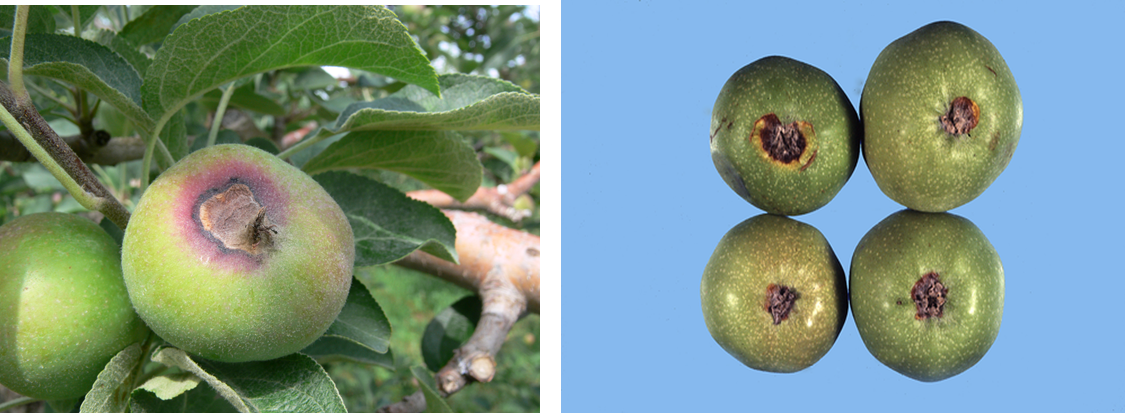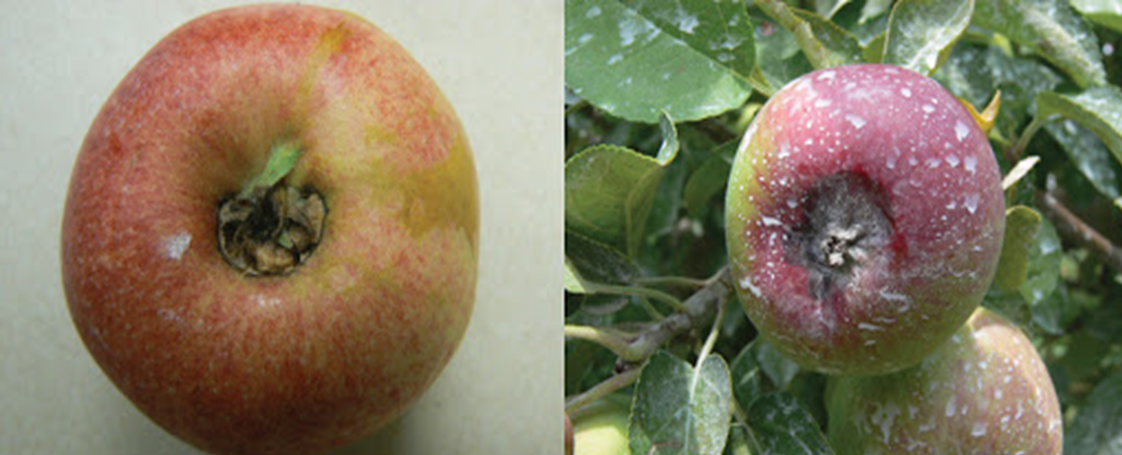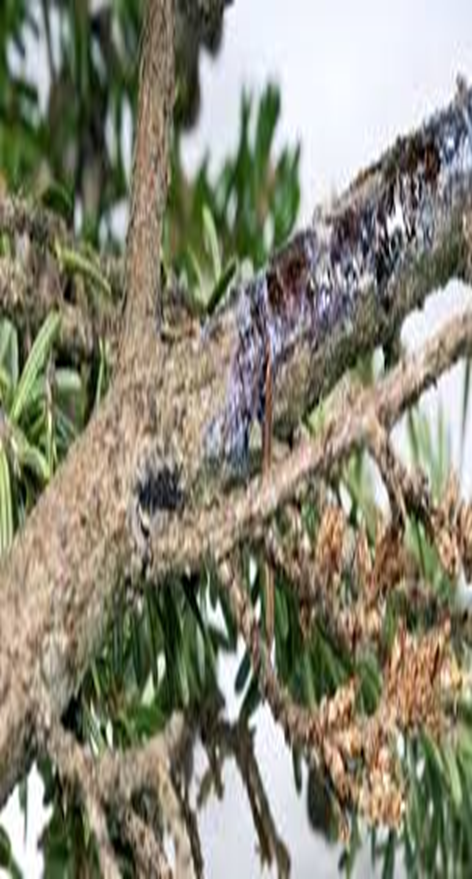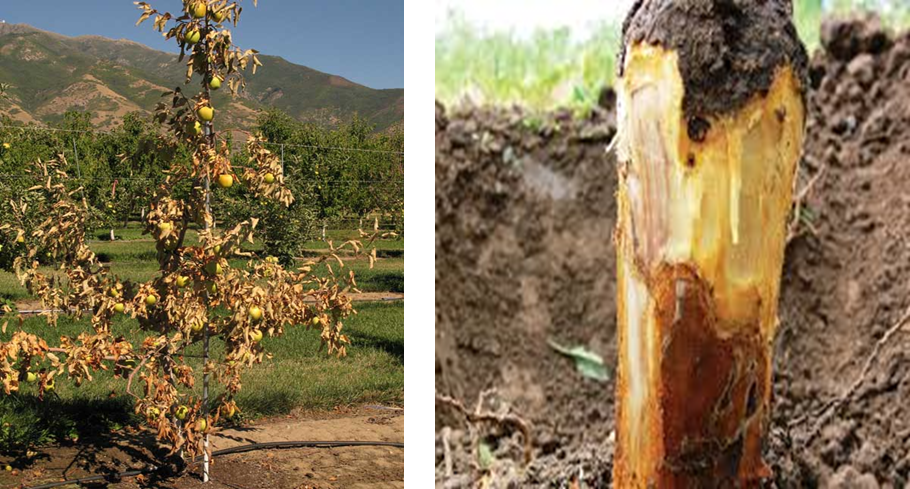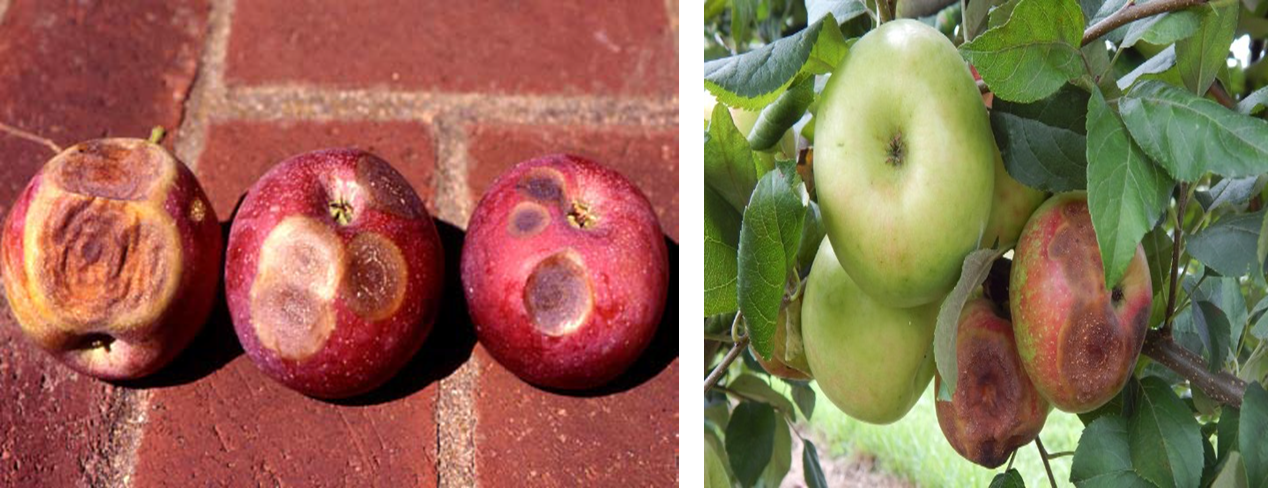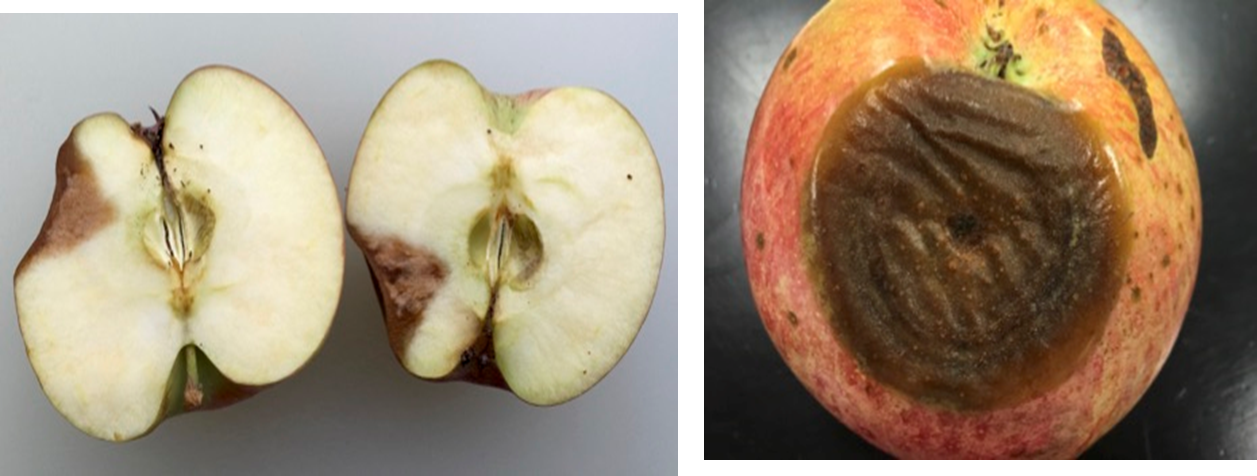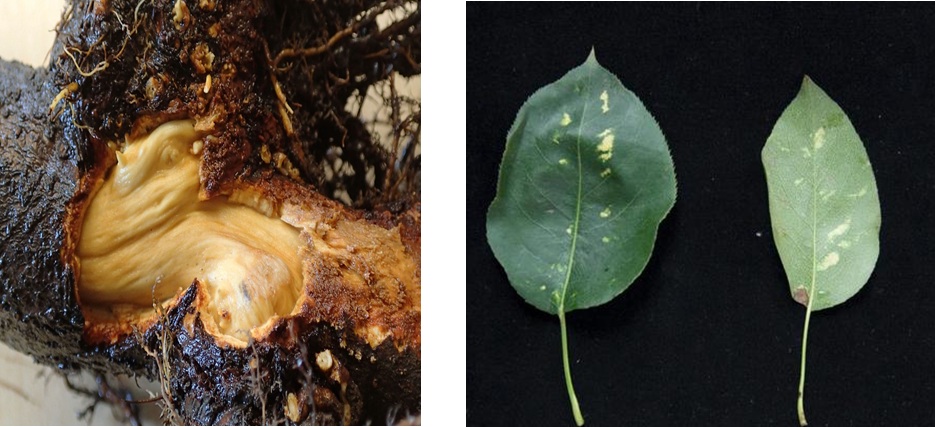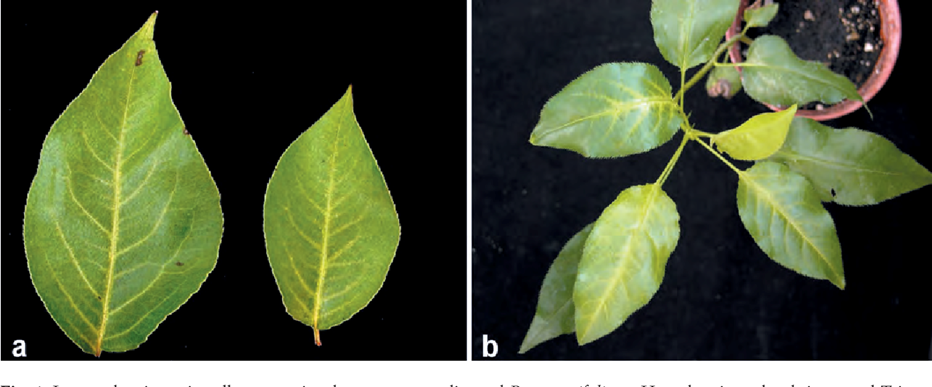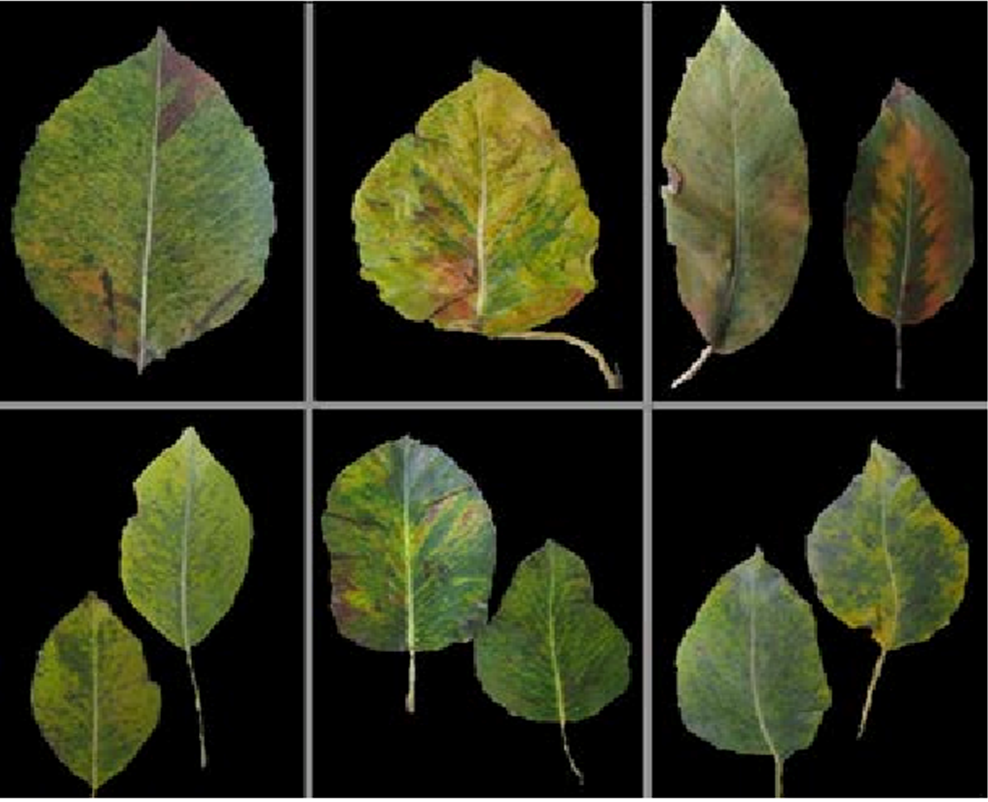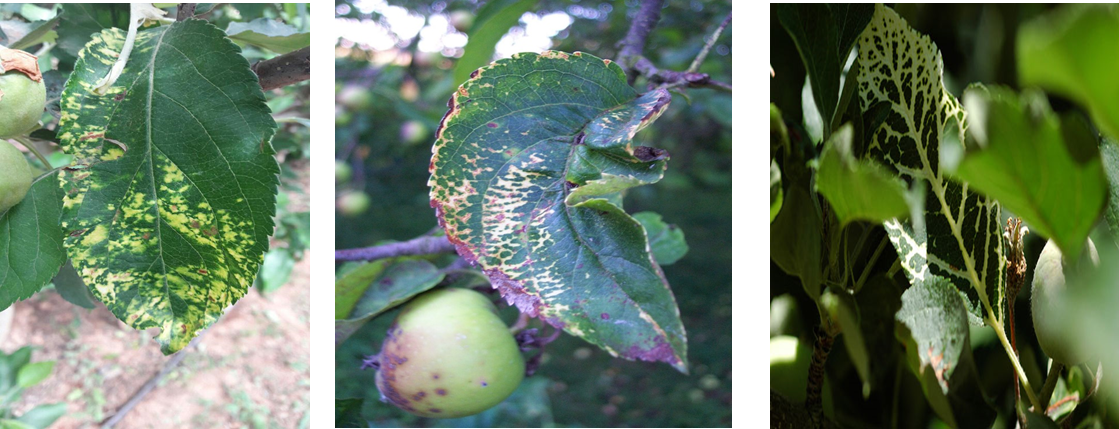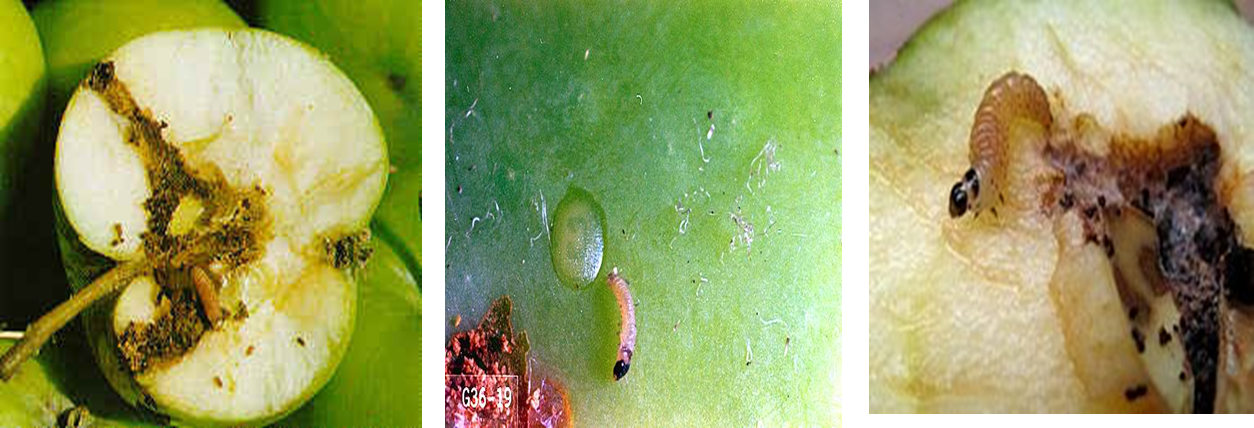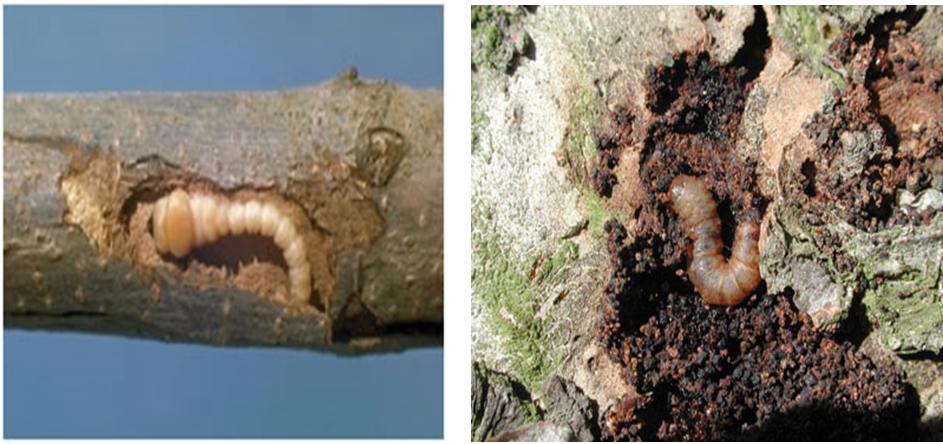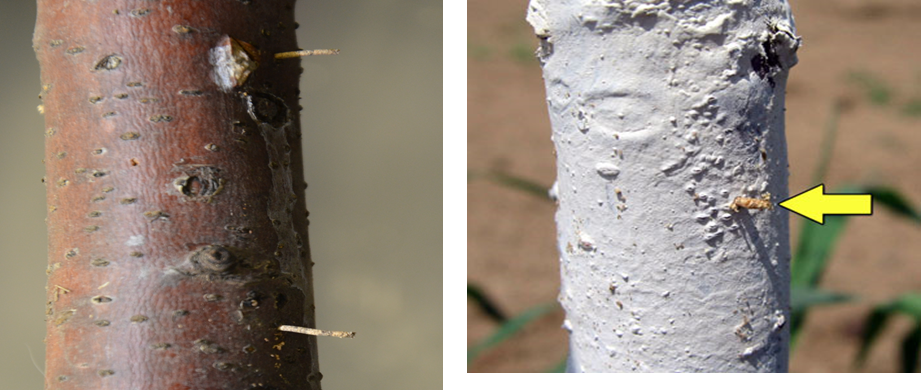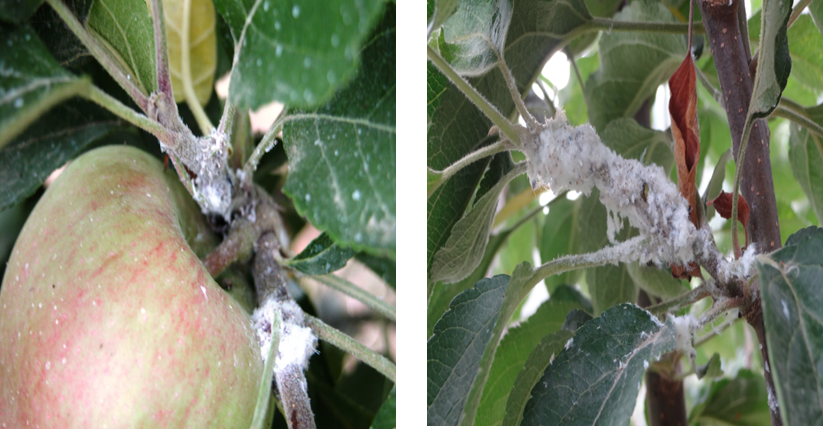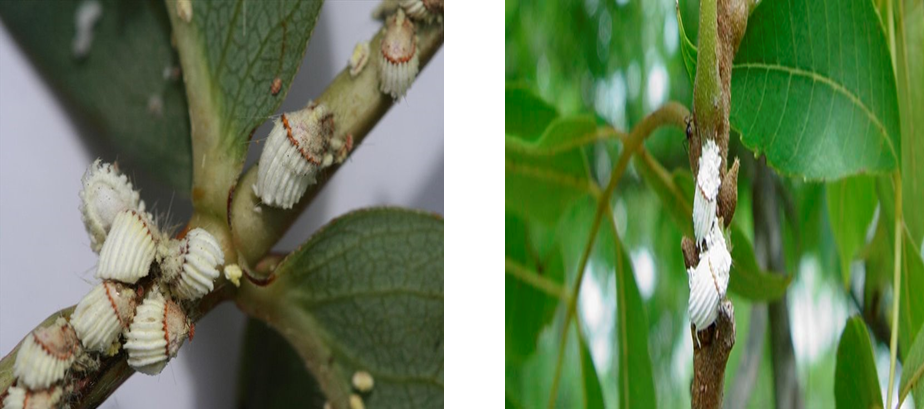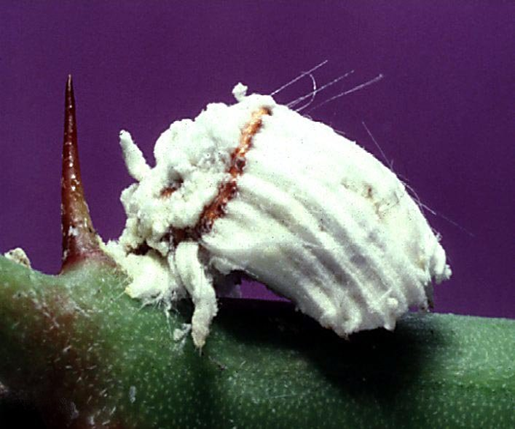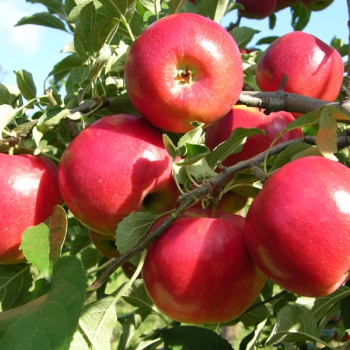
- Apple are a member of the family Rosaceae.
- The apple is a deciduous tree, generally standing 2 to 4.5 m (6 to 15 ft) tall in cultivation and up to 9 m (30 ft) in the wild.
- Apple trees are cultivated worldwide and are the most widely grown species in the genus Malus
- They're high in antioxidants and fibre.
- Eating them has been associated to a decreased risk of diabetes, heart disease, and cancer, among other chronic diseases.
- Apples can help you lose weight and enhance your gut and cognitive health.
SOIL- Loamy soils
TEMPERATURE- 21-24(°C)
pH- 5.5 to 6.5
RAINFALL- 100-125cm
Irrigation is particularly critical during the budbreak – flowering stage and during the beginning of fruit fill.
The most critical periods of water requirement are April- August and peak water requirement is after fruit set.
Normally the orchards are irrigated immediately after manuring in the month of December-January.
During the summer periods, the crop is irrigated at an interval of 7-10 days.
|
BHOOMI POWER 300-350g/tree |
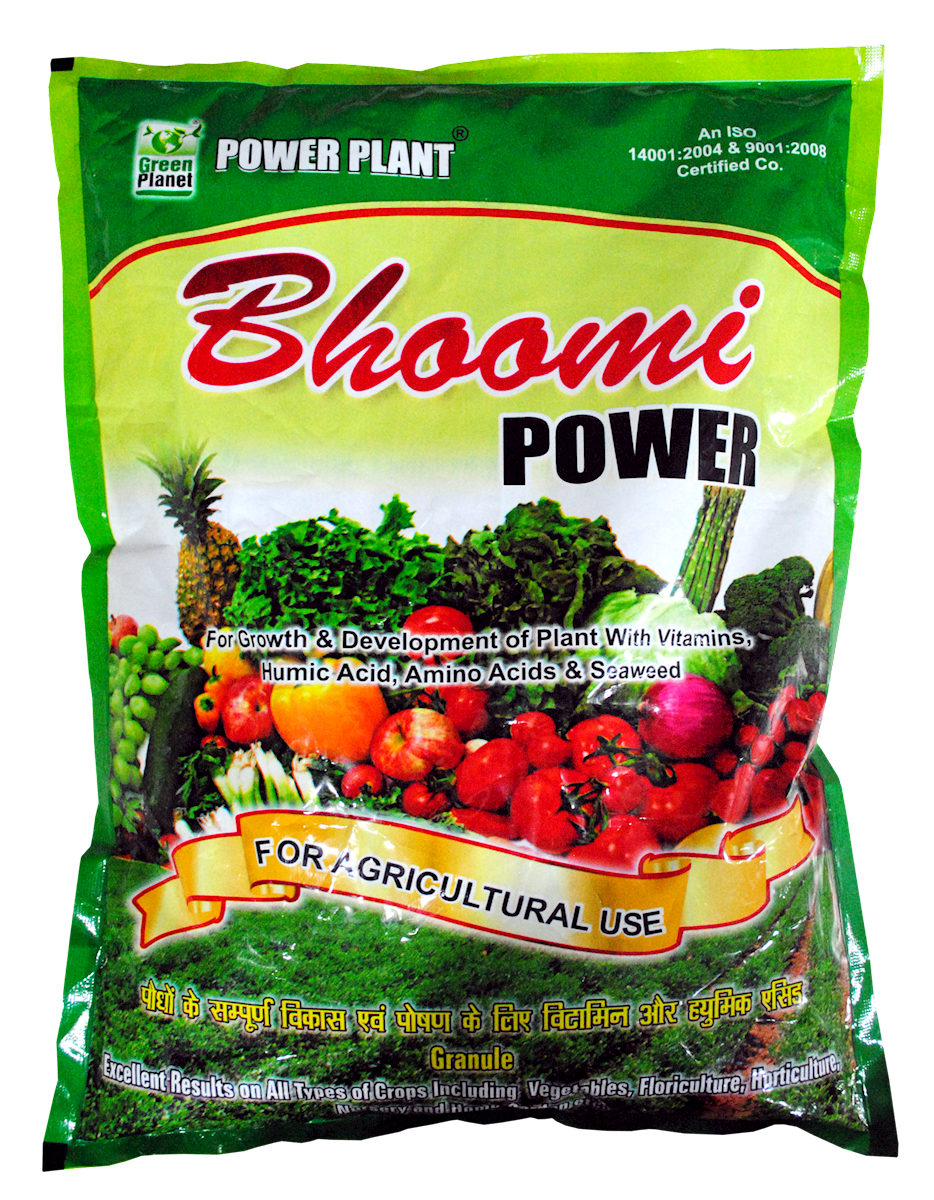 |
|
POWER PLANT PREMIUM 30-40 ml/tree |
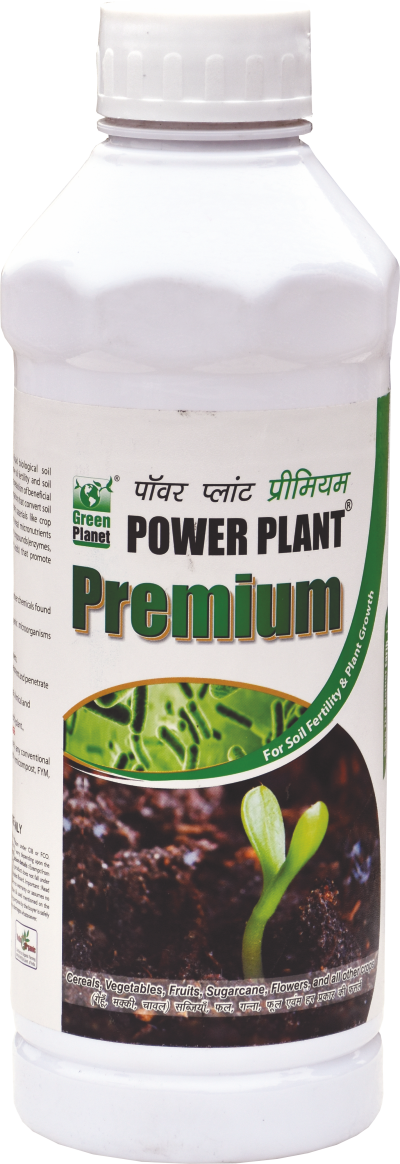 |
|
ROOT GUARD 100-150 g/tree |
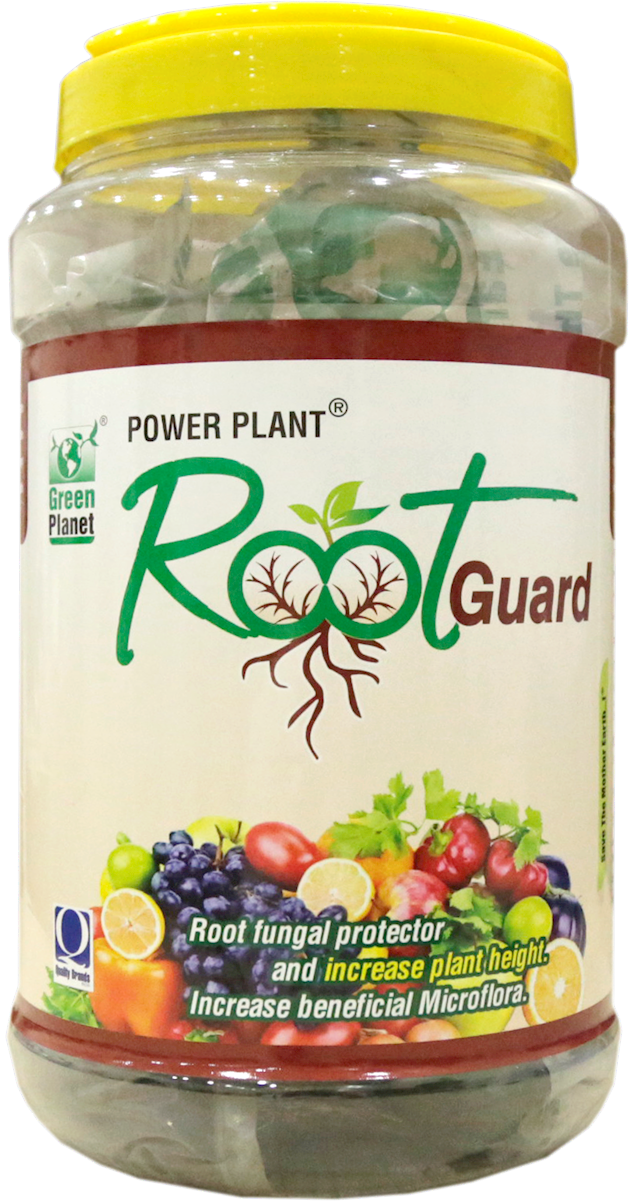 |
1. DEFICIENCY OF NITROGEN
Symptoms include poor plant growth, and leaves become pale green or yellow because they are unable to make sufficient chlorophyll.
TREATMENT:
|
Use NITROKING 2-3 ml per litre of water |
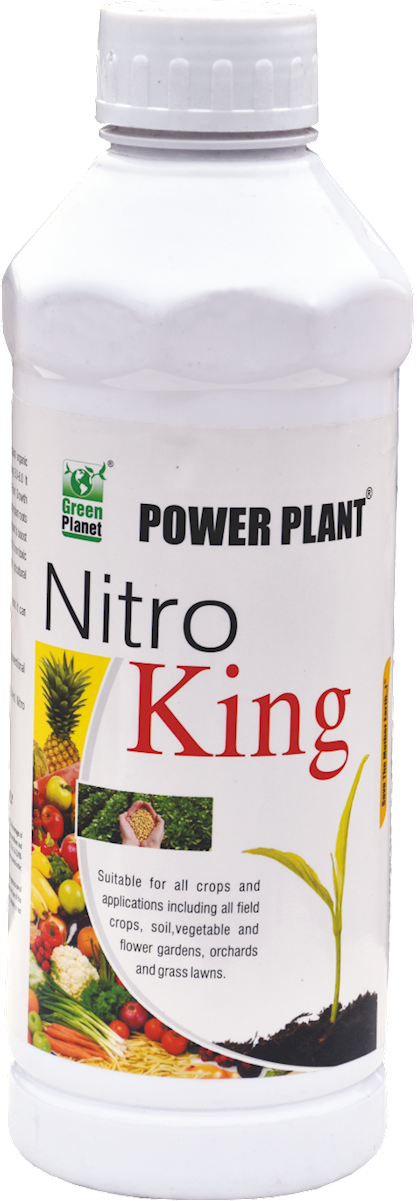 |
|
Use SPALL90 0.5 ml per litre of water |
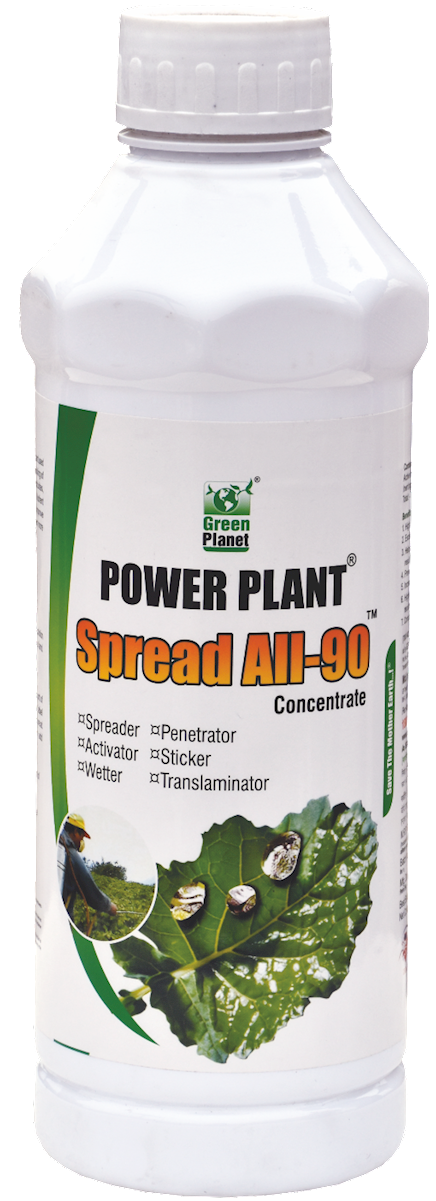 |
2. DEFICIENCY OF PHOSPHORUS
TREATMENT:
|
Use NITROKING 2-3 ml per litre of water |
 |
|
Use SPALL90 0.5 ml per litre of water |
 |
3. DEFICIENCY OF POTASSIUM
TREATMENT:
|
Use NITROKING 2-3 ml per litre of water |
 |
|
Use SPALL90 0.5 ml per litre of water |
 |
4. DEFICIENCY OF MAGNESIUM
TREATMENT:
|
Use Grow 2 ml per litre of water |
 |
|
Use SPALL90 0.5 ml per litre of water |
 |
5. DEFICIENCY OF IRON
TREATMENT:
|
Use Grow 2 ml per litre of water |
 |
|
Use Ferric EDTA 0.5-1 gm per litre of water |
.png) |
|
Use SPALL90 0.5 ml per litre of water |
 |
6. DEFICIENCY OF ZINC
TREATMENT:
|
Use Grow 2 ml per litre of water |
 |
|
Use SPALL90 0.5 ml per litre of water |
 |
7. DEFICIENCY OF BORON
TREATMENT:
|
Use BLOOM 2 ml per litre of water |
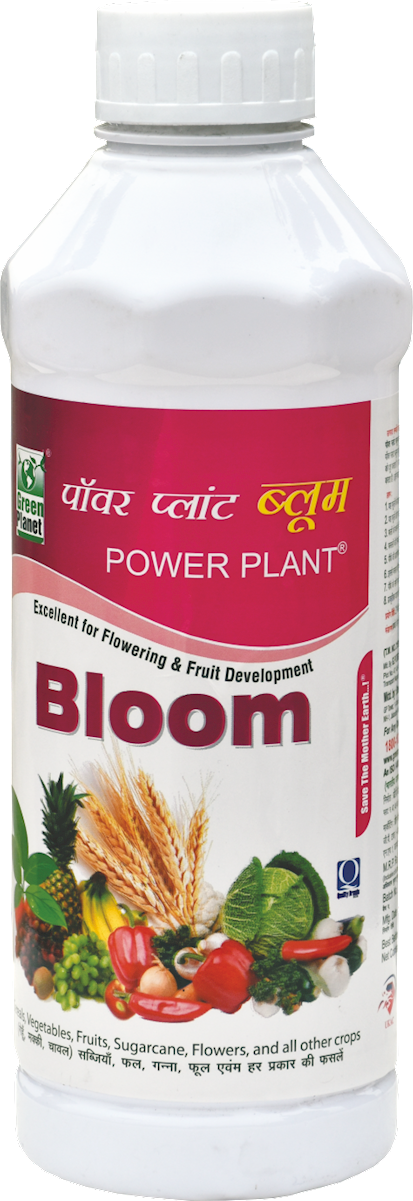 |
|
Use SPALL90 ml per litre of water |
 |
1. FUNGAL DISEASE:
A. CONTACT-BASED FUNGAL DISEASE
1. APPLE SCAB(Venturia inequalis)
|
Use PPFC 2-3 gm per litre of water |
 |
|
Use SpAll90 0.5 ml per litre of water |
 |
2. ANTHRACNOSE CANKER (Pezicula malicortici)
|
Use PPFC 2-3 gm per litre of water |
 |
|
Use SpAll90 0.5 ml per litre of water |
 |
3. BLUE MOLD( Penicillium expansum)
|
Use PPFC 2-3 gm per litre of water |
 |
|
Use SpAll90 0.5 ml per litre of water |
 |
4 . RUST DISEASE (Gymnosporangium juniperi-virginianae)
|
Use PPFC 2-3 gm per litre of water |
 |
|
Use SpAll90 0.5 ml per litre of water |
 |
5.POWDERY MILDEW (Podosphaera leucotricha)
|
Use PPFC 2-3 gm per litre of water |
 |
|
Use SpAll90 0.5 ml per litre of water |
 |
6. FIRE BLIGHT (Erwinia amylovora)
|
Use PPFC 2-3 gm per litre of water |
 |
|
Use SpAll90 0.5 ml per litre of water |
 |
B. SYSTEMIC-BASED FUNGAL DISEASE
1. BLACK ROT (Botryosphaeria obtuse)
TREATMENT
|
Use Fungohit 2-3ml per litre of water |
 |
|
Use SpAll90 0.5 ml per litre of water |
 |
2.GREY MOLD ROT (BOTRYTIS CINEREA)
TREATMENT
|
Use Fungohit 2-3ml per litre of water |
 |
|
Use SpAll90 0.5 ml per litre of water |
 |
3.CALYX END ROT ( Sclerotinia sclerotiorum)
TREATMENT
|
Use Fungohit 2-3ml per litre of water |
 |
|
Use SpAll90 0.5 ml per litre of water |
 |
4. PHYTOPHTHORA ROOT ROT(Phytophthora oomycetes )
TREATMENT
|
Use Fungohit 2-3ml per litre of water |
 |
|
Use SpAll90 0.5 ml per litre of water |
 |
5. BITTER ROT (Glomerella cingulate)
TREATMENT
|
Use Fungohit 2-3ml per litre of water |
 |
|
Use SpAll90 0.5 ml per litre of water |
 |
B. VIRAL DISEASES
1. APPLE STEM PITTING VIRUS
TREATMENT
|
Use Virohit 2-3 ml per litre of water |
 |
|
Use virosol 2-3 ml per litre of water |
 |
|
Use PPNP 1 ml per litre of water |
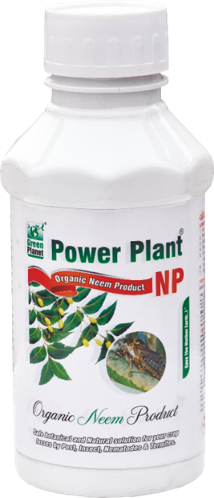 |
|
Use SpAll90 0.5 ml per litre of water |
 |
2.APPLE CHLOROTIC LEAF SPOT VIRUS
TREATMENT
|
Use Virohit 2-3 ml per litre of water |
 |
|
Use virosol 2-3 ml per litre of water |
 |
|
Use PPNP 1 ml per litre of water |
 |
|
Use SpAll90 0.5 ml per litre of water |
 |
3. APPLE MOSAIC VIRUS
TREATMENT
|
Use Virohit 2-3 ml per litre of water |
 |
|
Use virosol 2-3 ml per litre of water |
 |
|
Use PPNP 1 ml per litre of water |
 |
|
Use SpAll90 0.5 ml per litre of water |
 |
C. PESTS
(i) CHEWING PESTS
1. CODLING MOTH (Cydia pomonella )
TREATMENT :
|
Use Pestohit 2-3 ml per litre of water |
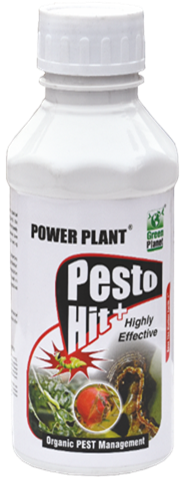 |
|
Use PPNP 1 ml per litre of water |
 |
|
Use SpAll90 0.5 ml per litre of water |
 |
2. STEM BORER (Apriona cinera )
TREATMENT
|
Use Pestohit 2-3 ml per litre of water |
 |
|
Use PPNP 1 ml per litre of water |
 |
|
Use SpAll90 0.5 ml per litre of water |
 |
B. SUCKING PESTS
1. WOOLLY APHIDS(Eriosoma lanigerum)
TREATMENT :
|
Use Orgomite 2-3 ml per litre of water |
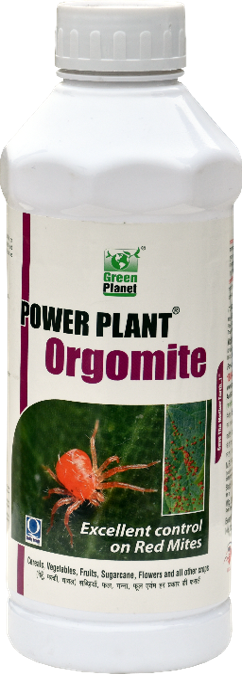 |
|
Use PPNP 1 ml per litre of water |
 |
|
Use SpAll90 0.5 ml per litre of water |
 |
2. COTTONY CUSHION SCALE(Icerya purchase )
TREATMENT :
|
Use Orgomite 2-3 ml per litre of water |
 |
|
Use PPNP 1 ml per litre of water |
 |
|
Use SpAll90 0.5 ml per litre of water |
 |


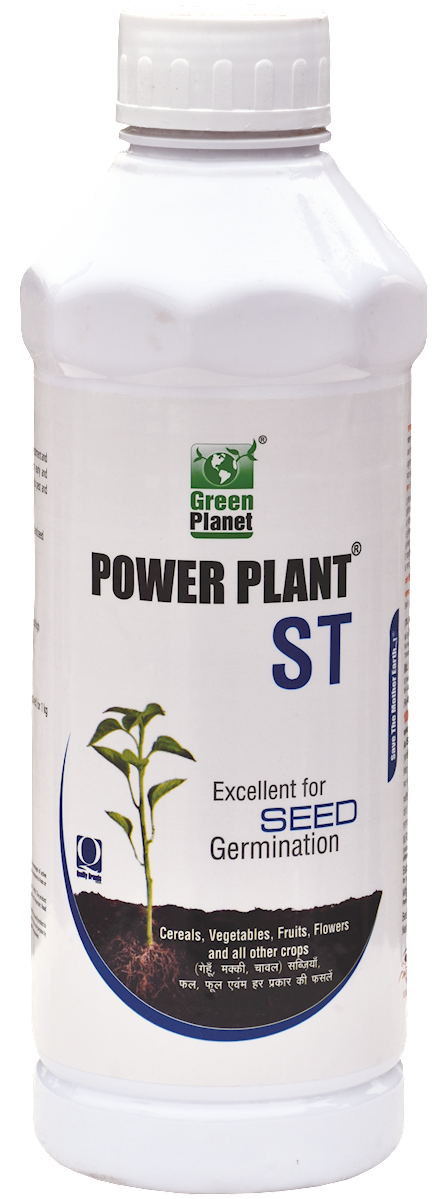

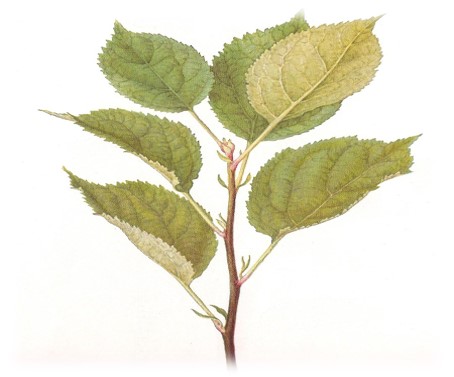
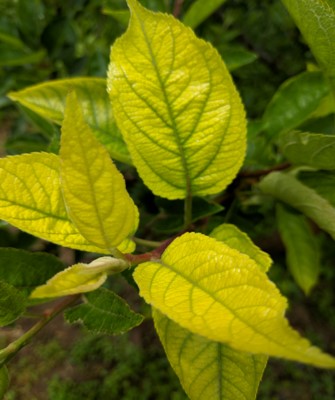
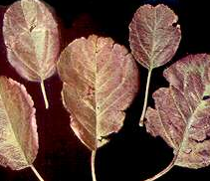
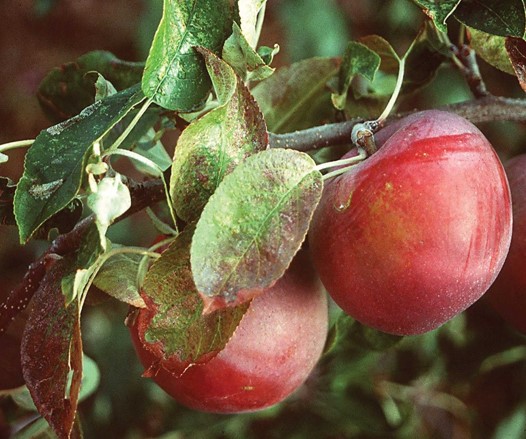
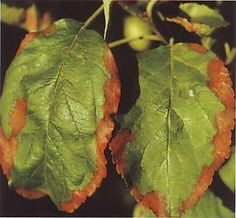
.jpg)
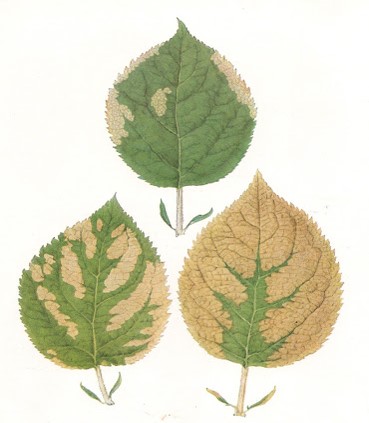
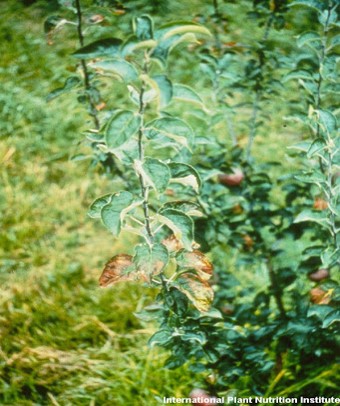
.gif)
